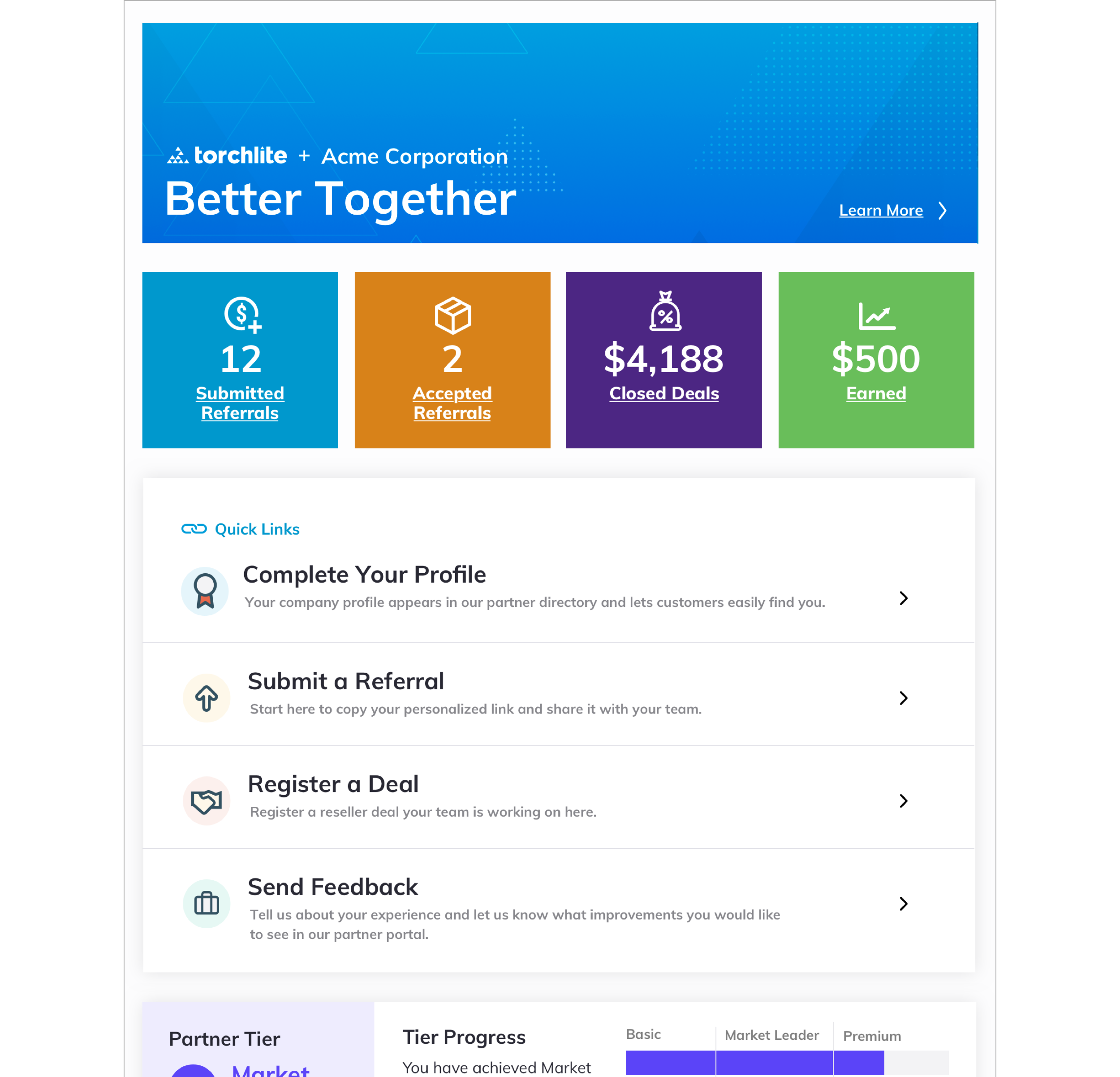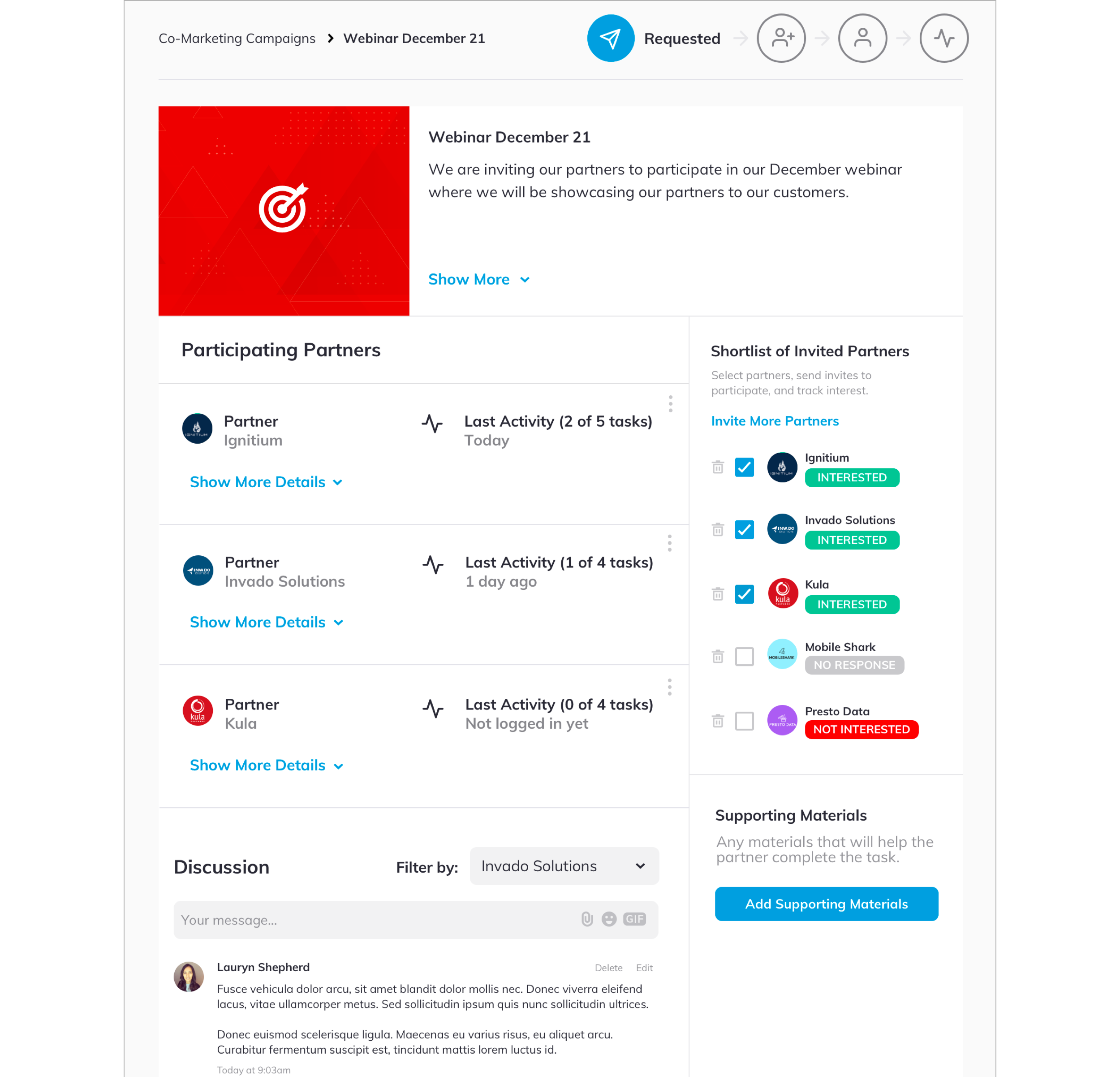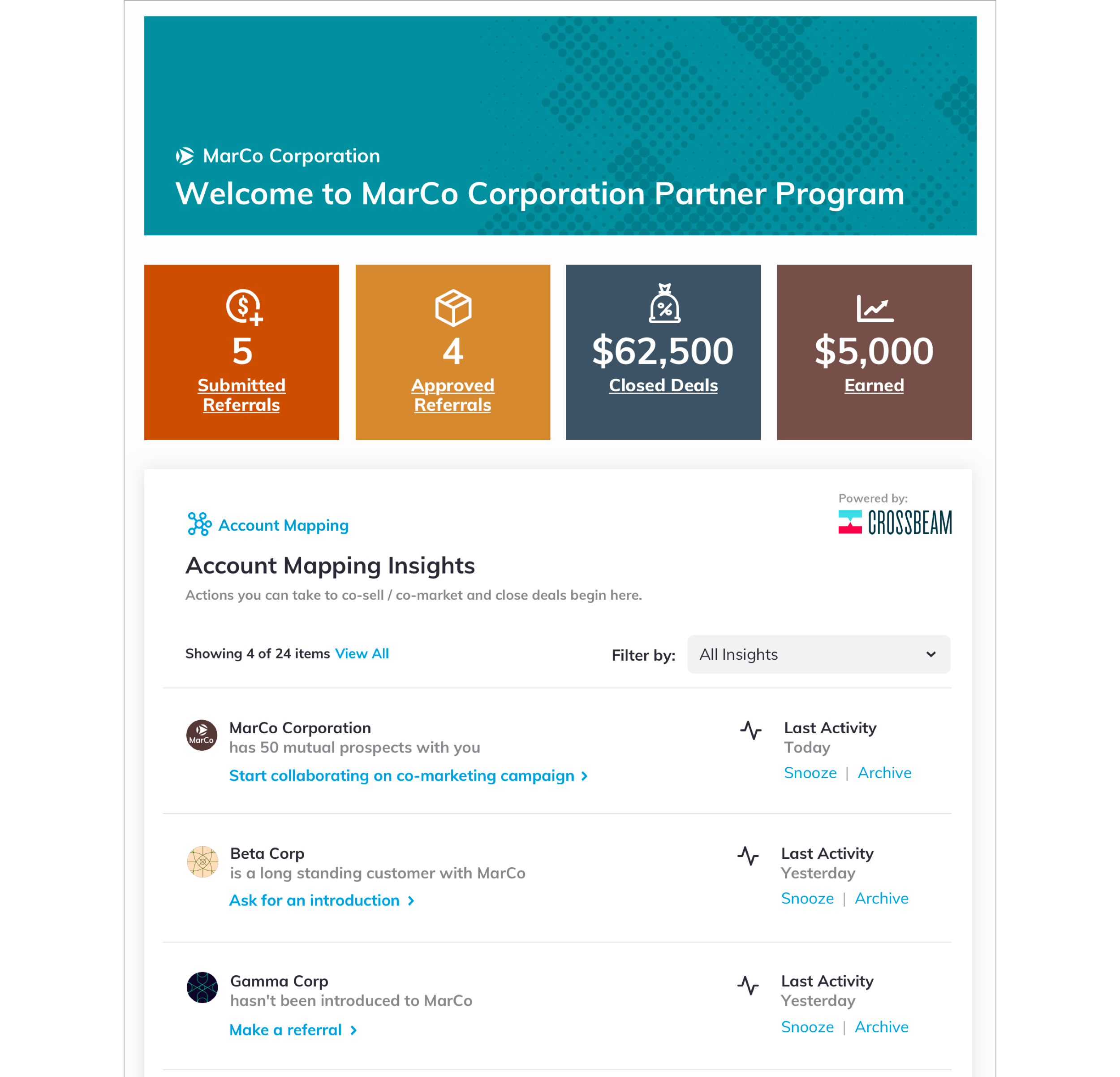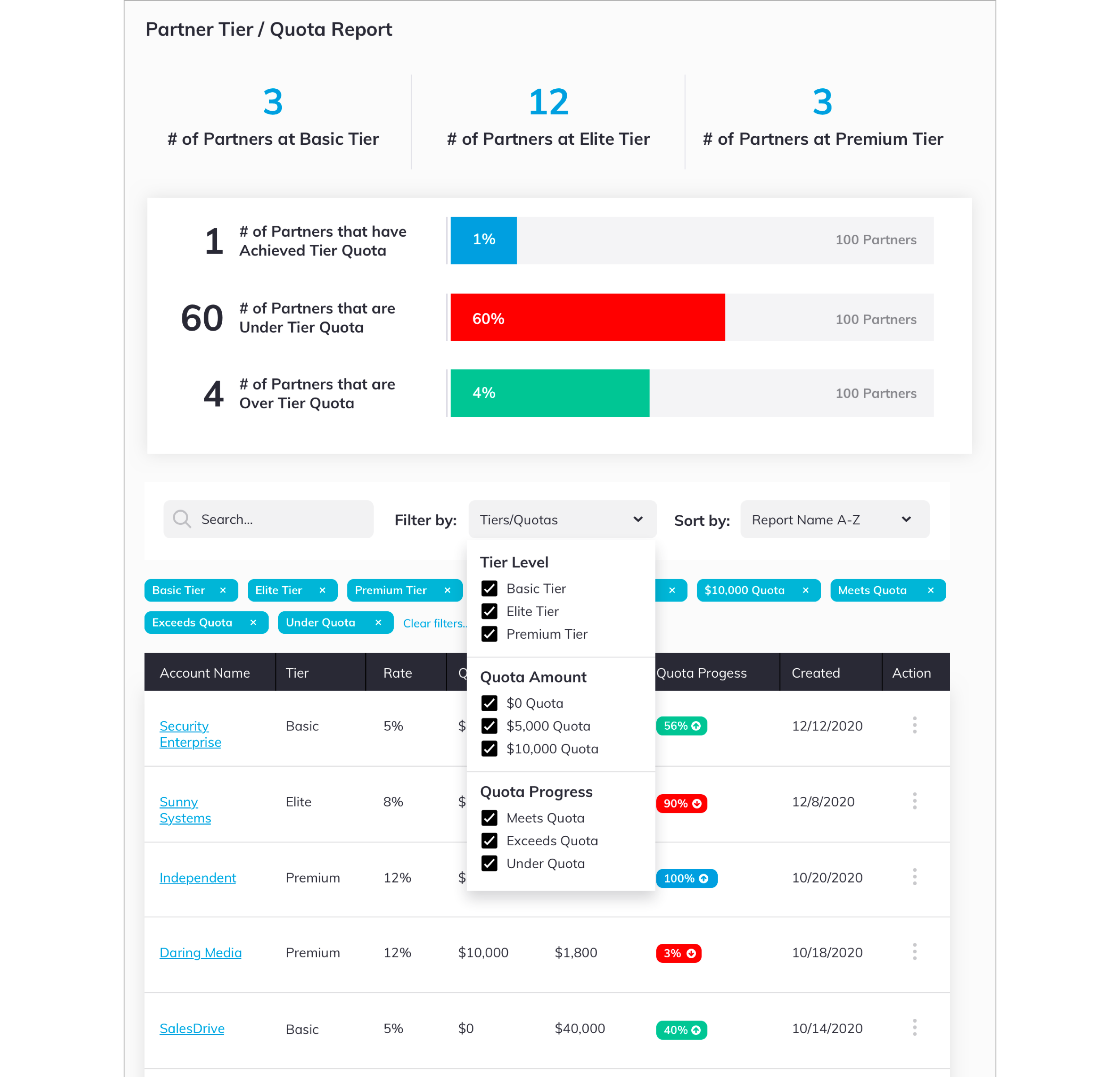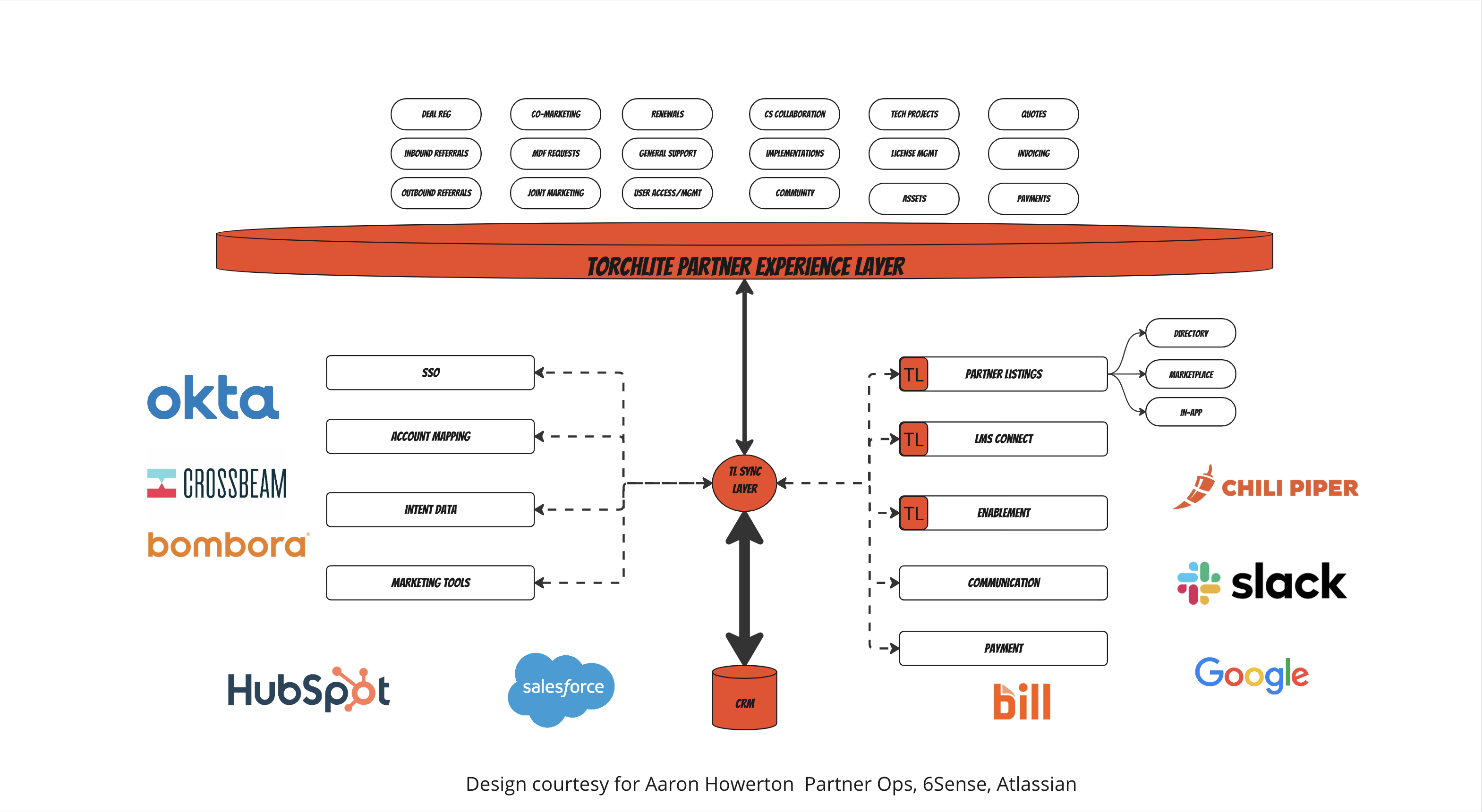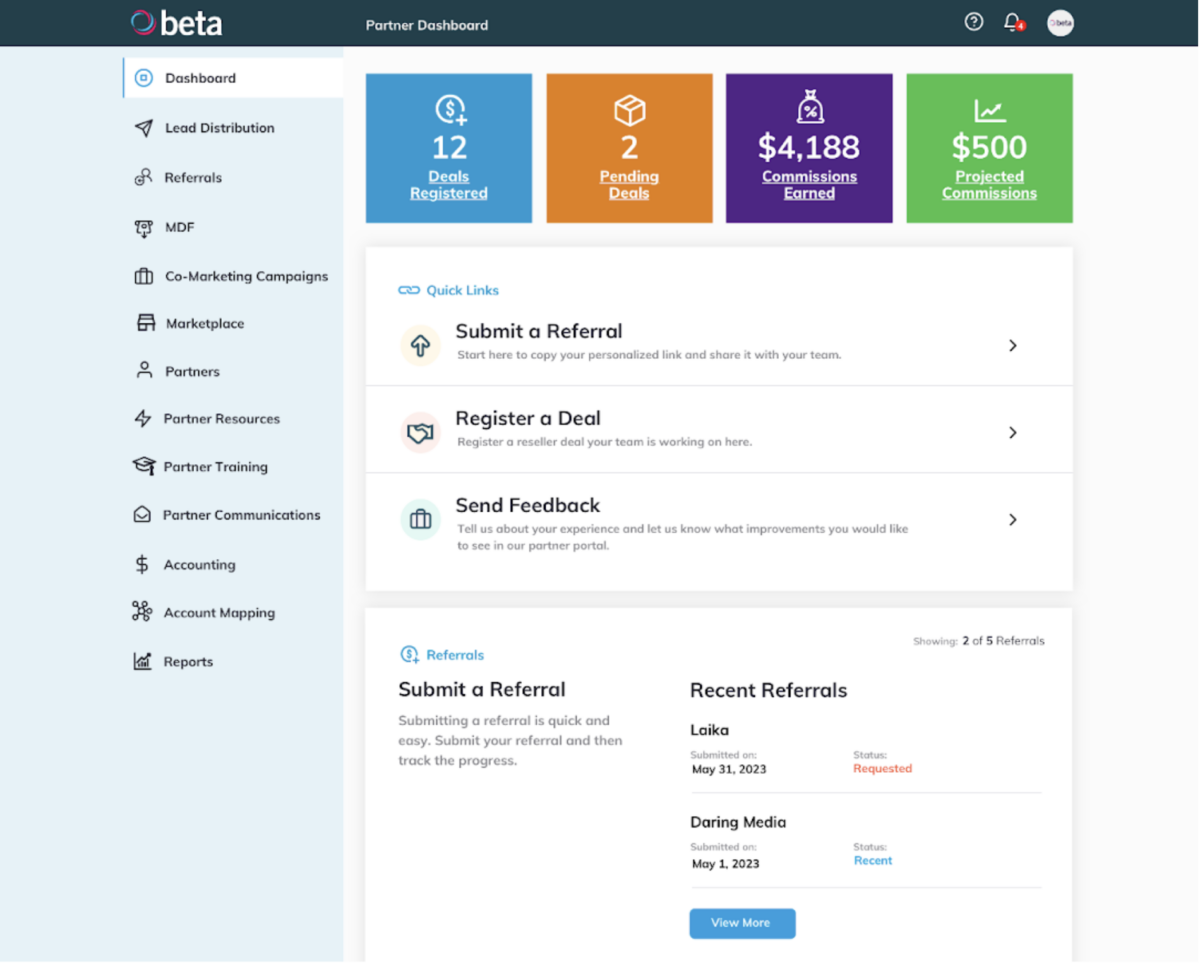Partner Management
On the surface, partner management is a simple concept: the idea of effectively guiding and organizing business partners for a company. For a company, partner management is all about tracking relationships with different companies, improving communication between said companies, and quantifying how each partnership contributes to company success. All of these factors make partner management a great asset to a business—when done well.
Unfortunately, actually doing partner management well is not always so simple. As a business forms more partnerships—each with its own unique relationship—several challenges arise:
- How do you effectively manage partnerships of different types?
- How do you structure a partner program that evolves as your business grows?
- How can you measure what each partner brings to your business, and vice versa?
- What’s the best way to communicate a partnership’s value to leadership teams?
If a partner management program doesn’t effectively address these challenges from the start, managing business relationships quickly becomes stressful, confusing, and perhaps not even worth the hassle. Disorganized tracking, poor communication between partners, and an inability to track ROI are just a few reasons why companies struggle to sustain partnerships, and sometimes even end up abandoning partnerships that were actually helping them.
Thankfully, this is an easy fate to avoid. With a good plan and the tools to support it, your business can build a thriving, successful partnership program. And if you’re looking for ways to improve your partner relationship management (PRM) strategy, look no further. At Torchlite, we know what it takes to create a partner program that’s both intelligent and simple—and that includes having the right software. In this article, we will cover the basics of partner management as a whole, and discuss how a software solution like Torchlite can take partner management and ROI tracking to the next level. For ease of navigation, this article splits into the following three sections:
- Part 1: What Is Partner Management?
- Part 2: How Do You Develop a Partner Strategy?
- Part 3: What Is a Partner Relationship Management Tool?
After reading this, you will understand what Partner Relationship Management (PRM) is, why it is important, and how PRM can impact customer relationships.
Part 1: What Is Partner Management?
Partner management, or PRM, is the business strategy of overseeing and optimizing relationships with one or more partners and/or affiliates. When two businesses want to work together, they establish a formal relationship known as a “partner program.” Businesses form partner programs for a variety of reasons, including resale, distribution, supply, or other strategic initiatives. And ultimately, PRM aims to make each partner program as mutually beneficial as possible—namely through communication, technology, and automated tracking for financial reports.
Here are a few real-world examples of partner programs:
- AWS Partner Network (APN) | Amazon Web Services (AWS) has a partner program for companies that resell, implement, or manage AWS services. APN partners can earn certifications and specializations, and have access to marketing and sales support.
- Microsoft Partner Network | A partner program where Microsoft offers certification, tech, support, and resources to those that use and/or resell Microsoft products.
- Shopify Partner Program | Shopify offers a partner program for developers, designers, and agencies that build and market e-commerce websites using the Shopify platform. Partners can earn certifications, access to technical support and training, and have access to marketing and sales resources.
As you can see, each partnership has similar goals and objectives. All of them provide support to organizations that use their products and services, which ensures better promotion of their brand.
What Does Partner Management Do?
In short, partner management tracks, mitigates, and facilitates each business’s partner program individually, as well as the partnership strategy as a whole. There needs to be a strategy for each partner program, but there also must be an overall strategy for how a business manages its partners. As a business function, PRM is a complex, ever-evolving mixture of building connections and managing finances.
Why Is Partnership Management Important?
There are two main reasons partnership management is crucial: building relationships and tracking return of investment (ROI).
First, good partner management helps businesses form stronger, more transparent, and ultimately more successful partnerships. Keeping things simple, organized, and clear for partners not only makes things easier for a business, but for that business’s partners as well.
Secondly, managing partner programs well is crucial for effectively measuring a partnerships’ performance. Financial attribution—or being able to pinpoint where monetary success comes from, and why—is a vital piece of measuring ROI, one that can only happen through meticulous data tracking. A company should be able to easily answer “Why is this partnership valuable to the company?” for the sake of its leadership team and its partners.
When done well, partner management fosters strong business relationships and eases partnership decision-making for leadership teams.
The PRM Impact on Customer Relationship Building
Part of why partner programs (and PRM) are so important is the increasing challenge for businesses to funnel customers through inbound and outbound marketing. In a world where consumers are seeing upward of 10,000 advertisements a day, the process of establishing client relationships becomes an increasingly uphill battle. Businesses are relying more and more on partnerships because it’s much easier to sell products to clients who were introduced to you by a brand they already trust. And for partnerships to be successful, PRM is a critical piece.
Several studies have shown the value of PRM when it’s done properly. Here are just a few examples:
- Forrester Research found that companies with effective partner programs generate 28% of their total revenue through their partner channels.
- Gartner found that companies that engage in partner marketing programs see a 24% increase in deal size.
How Do You Structure a Partner Program?
Partnerships take on a wide variety of structures depending on each business’s goals, missions, and products. But ultimately, a strategic partnership (when done well) provides mutual benefit to both partners. Below are eight different examples of strategic partnerships in the B2B space:
- Reseller | Manufacturers will often partner with intermediary companies who sell the manufacturers’ products on their behalf. These companies, known as resellers, purchase goods from manufacturers at the base rate (or wholesale price), then sell them at a marked up rate (or retail price) for a profit. For example, a clothing company might sell their wares to a department store. In this case, the clothing company benefits from having a large-quantity buyer, and the department store can stock and sell products without having to manufacture them.
- Distribution | Another common manufacturer partnership is distribution partners. Distributors help market and sell the manufacturer’s products to other companies, often in exchange for exclusivity of distribution. In addition to providing increased market share, distributors often help manufacturers with logistics, inventory management, and other operational functions that require large amounts of resources. A real-world example of this is Ale-8-One, a regional soft drink company, forming a distribution partnership with Coca-Cola in 2001; in this case, Ale-8-One benefits from having the reach and resources of a global soft drink company, and Coca-Cola benefits from selling a unique product—one that its global competitors do not carry.
- Referral | Similar to customer referrals, business partners will sometimes refer their clients to other businesses—typically from existing networks, such as a partner’s customer network. Referral programs help both companies amplify their marketing efforts; additionally, each partner will usually give some sort of monetary incentive for successful referrals.
- Co-Marketing | Business partners can work together to promote each other’s products to their respective customer bases, adding to each company’s market share. Co-marketing is especially common between companies whose products are complementary. For example, a coffee grower and a thermos manufacturer might form a referral program together, as people who drink coffee are likely interested in insulated drinkware, and vice versa.
- Affiliate | Similar to referral and co-marketing programs, affiliate partner programs focus on connecting partners with potential clients. However, affiliate programs are typically much simpler, using a method such as referral links rather than full-on introductions or customer relationships.
- Strategic Partnership | In a strategic partnership, two or more businesses will combine their efforts in a specific focus area, such as marketing, finance, technology, or any number of company goals. Strategic partnerships usually form between companies whose products synergize or form a more holistic customer benefit. A successful example of this is the partnership between Starbucks and Barnes & Noble.
- Technology Partnership | Businesses often develop partner programs with software companies whose technology either integrates well into their product offerings, or helps them better run their business. Tech companies themselves might also seek a software partner when their products work well together—like how we at Torchlite partner with Crossbeam, another software in the partner management space.
- Co-Selling | In this setup, two or more businesses work together to sell their products as a joint offering and/or in tandem with one another. Each partner benefits from adding their product into a combined solution. Additionally, the partnership provides better value to clients without each company having to create multiple nuanced products on their own.
What Are the Components of Partner Management?
Regardless of the industry, a good PRM strategy should have five key components:
- Partner Assessment | Identifying, screening, and eventually selecting potential new partners
- Agreement Structuring | The process of developing and drafting terms for partnerships, including term review and renewal
- Communications | Establishing channels for correspondence, collaboration, and ideation
- Performance Tracking | Continuous measurement of financial metrics and ROI from partnerships
- Relationship Management | Facilitating and maintaining each phase of the partnership—from onboarding and onward
What Are Examples of Relationship Management?
Relationship management can be anything that relates to each step of developing and/or maintaining a business partner program. This includes (but is not limited to) onboarding, partner support, term renewal, and regular communications.
What Are the Key Principles of Partnership Management?
While the above components set the stage, underlying principles guide the performance. These are the timeless values that any PRM strategy should imbibe for success.
The following lay the groundwork for thriving partnerships:
- Connection | Leading with strong communication, easy resource sharing and clear goal-setting
- Attribution | The ability to easily see which leads and conversions come from each partnership
- Innovation | Forming partnerships that uniquely fit each relationship and maximize its benefits
- Organization | Having a well-defined system for data collection, tracking, reporting, and storage
- Transparency | Providing visibility into partner programs for leadership, partners, and neighboring departments in your company (such as sales, marketing, or product development)
What Makes a Successful Partner Manager?
A successful partner account manager needs to be a strong communicator, detail-oriented, and have the ability to manage multiple projects simultaneously. Partner managers have the challenge of building genuine relationships while also effectively leveraging those relationships for business growth. They also need to be able to quickly and easily quantify the financial impact each partner has on the business. While some of these are learned skills, partner managers need the right technology to support their role. Oftentimes, the complexity and variability of partner programs far exceeds the technology a partner manager has, which makes their job even more challenging.
Having a good PRM solution like Torchlite is critical, even for the most skilled of partner managers. Skills with leadership and management cannot compensate for an overly complex, hard-to-manage system that does not provide accurate financial tracking or evolve with the business. This is exactly why Torchlite provides a “Simply Intelligent” solution that is accurate, adaptable, and helps managers track targeted data.
Part 2: How Do You Develop a Partner Strategy?
A partner strategy should address each step of forming and maintaining individual partner programs, as well as how to maintain the collective of relationships as a whole. Below, we answer the question “What should a partnership strategy include?” with a nine-step process. Following these steps will help you create a successful partner management strategy and continually improve your partner management process over time.
Step 1: Define Your Goals
Before anything else, you must clearly determine what you hope to accomplish with your partner programs. This step will help you decide what kind of partners to seek out, based on why you want to work with them. It also helps you know what incentives you will need to offer. Are you in need of a large-scale distributor or a retailer to help you sell your products? Does your product synergize well with another company’s, and could you both benefit from working together? No matter what your goals are, you also need to always ask the question: “What do I bring to the table for this partnership?”
Step 2: Identify Potential Partners
Once you know the goals for your partnership programs, it’s time to find business partners that align with your goals, needs, and target market. Depending on your needs, there are a variety of partnership types you can forge, including resellers, distributors, software partners, or any of the other partner types we covered in the previous sub-section titled “What Is Partner Management?”
Step 3: Create a Partner Agreement
A partner program requires a legal agreement which outlines the terms of the partnership. While this will look slightly different for each partner type, these agreements will generally outline the responsibilities of both parties, as well as compensation, marketing materials, or any other relevant details for the partnership. Using the goals set in Step 1, you can draft a template for each partner type you’re targeting. Having templates gives you something to work from that can easily adjust as needed.
Step 4: Set up a Partner Portal
Your partner management system will need a platform that allows each partner to…
- Communicate with your organization
- Provide access to any needed resources
- Track the program’s progress and performance
This step is usually where partnership programs begin to falter due to not having the right tools for the job. While it may be possible to use simple tools like email, spreadsheets or your CRM for one to two partners, adding more partners eventually becomes near-impossible to handle well. Partner relationship management software like Torchlite creates a unified, bi-directional PRM database that gives partners access to key information without requiring them to access your business’s personal records. Additionally, programs like Torchlite facilitate communications, resource sharing, and financial tracking.
Step 5: Compile Training and Enablement Resources
A partner program doesn’t stop after you shake hands and sign the contract. Each partner will need training, onboarding, and orientation for your business and how the partnership works. If your partners understand your products and services well, they will be far better at boosting your success—and vice versa. This is yet another instance where having the right partner management tools and software makes the process far easier.
Step 6: Establish a Measurement and Reporting System
As your partnerships ripen, you and your partners will all want to be able to easily measure the results of your partner programs and report them to your teams. How will you quantify success, and how will you determine where it comes from? If you have the right PRM platform, this step has already been done for you.
Step 7: Decide on Your Incentives
The best partnerships are mutually beneficial, which means that as you build relationships with partners, you need to know what you’re offering them. Keep in mind that this doesn’t have to be a simple transactional reward. Instead, think about ways you can reward partners for meeting specific milestones, or how you can celebrate accomplishments you’ve achieved together. The more a partner feels both valued and valuable, the more likely they are to keep working with you.
Step 8: Prioritize Continual Engagement
Whether it’s for business or pleasure, the most important part of relationship building is communication. When you establish a partnership, you have to communicate with them regularly and effectively to form a stronger relationship and ensure your mutual success. Remember that good communication is not just about quantity or quality, but a combination of both. Keeping regular communication is important, but so is making sure your correspondence is meaningful, helpful, and informative. Good communication can look like regularly updating a partner on your marketing efforts, celebrating their milestones, or even just checking in to offer support.
Step 9: Continual Improvement
This final step is not really an end, but more of a beginning. After completing your partner strategy, you will need to constantly evaluate and improve it to better match your business—and your business partners. Your partnership will need regular assessment to ensure it’s still aligned with your…
- Company’s goals and objectives
- Partners’ goals and objectives
- Business operations processes
- Partners’ feedback and performance
The better records you have of your partner programs, the easier this step becomes. Consider using a PRM software that not only empowers this process, but can evolve alongside your business. But what does that look like? Continue onto the next section to find out.
Part 3: What Is a Partnership Management Tool?
A PRM management tool is a platform—typically software—that automates and consolidates various PRM strategy components. In order for a PRM management tool to be useful, it needs to be both functional and flexible. Good PRM tools have the capabilities PRM strategies need (functional) and can adapt alongside your partnerships and business growth (flexible). Keep reading to learn more about what to look for in a PRM tool, and why Torchlite is a shining example of PRM software done well.
What Does a PRM Solution Need?
A PRM solution should provide a centralized platform from which you can manage your partnerships. Here are just a few capabilities and features that are important for success:
- Core capabilities of PRM
- Account management
- Partner communication
- Partner onboarding and training
- Financial attribution and ROI tracking
- “Targeted intent” data
- Being able to clearly see what’s working with your partnership program
- Knowing exactly what specific partners bring to the table (and vice versa)
- NOTE: This is a key differentiator for marketing efforts; the more data you have to prove your partner program’s success, the easier it will be to bring on new partners!
- Mutual visibility
- Partners can see the details of their deal with you, and vice versa
- Better transparency—for better business and better relationships
- NOTE: You shouldn’t have to give partners access to your CRM for this to happen, and with the right software, you don’t have to!
Many partner managers know what they need to do, but find themselves hindered by their current software solutions (or lack thereof). It’s for this reason that you invest in a well-designed, holistic PRM solution.
Torchlite: The Best in PRM Technology
How do you manage partnership relationships? If you’re tired of scrambling between multiple platforms or struggling to show the value of partner programs to your leadership team, look no further than Torchlite. Our PRM software solution lights the way to a better PRM strategy through what we call “Simply Intelligent” partnership management: a method that combines state-of-the-art technology and easy-to-use interfaces. In the words of our CEO Kelly Schwedland, “Our product innovations are designed to help you not only reach your goals, but exceed them in ways you may haven’t even imagined.”
But what makes ours the best partner management software on the market? Simply put, Torchlite…
Supports business growth and flexibility. Through our unique integration hub and visualization layer (depicted below), you can start each partner program with a base level platform that can change and develop as your partnership does. This flexibility even includes the ability to integrate new software platforms, so you’re ready for partnerships you may form today and in the future. With Torchlite, you’ll never be limited by your software or stuck with a platform that’s doomed for obsolescence. Your PRM strategy will remain pliable, intelligent, and user-friendly.

